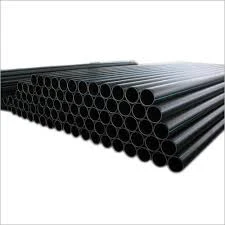Oct . 31, 2024 02:31 Back to list
hdpe pipe jointing
Understanding HDPE Pipe Jointing Techniques and Applications
High-Density Polyethylene (HDPE) pipes are widely recognized for their strength, durability, and flexibility, making them a preferred choice in various applications, including water supply, sewage, and industrial processes. One of the critical aspects of utilizing HDPE pipes effectively is understanding the various jointing methods that ensure reliable and leak-free connections. This article delves into the different techniques for joining HDPE pipes and their applications.
Types of HDPE Pipe Jointing Methods
1. Electrofusion Jointing This is one of the most common techniques used to join HDPE pipes. It involves the use of specially designed fittings that have built-in heating elements. When an electric current passes through these elements, they heat the surrounding pipe and fitting, melting the HDPE material and creating a strong bond upon cooling. Electrofusion is favored for its reliability and strength, making it ideal for high-pressure applications such as water distribution networks.
2. Butt Fusion Butt fusion jointing is another widely used method where two pipe ends are heated with a fusion machine until they reach the correct temperature, after which they are pressed together to form a bond. This method is particularly effective for joining large diameter pipes. Butt fusion joints are known for their excellent strength and resistance to environmental factors, making them suitable for both underground and above-ground installations.
3. Socket Fusion In socket fusion, a socket fitting is heated, and the pipe end is similarly heated. Once both components reach the appropriate temperature, they are pushed together, forming a joint as they cool. This method is often used for smaller diameter pipes and is considered one of the simplest jointing techniques.
4. Mechanical Jointing Mechanical jointing involves using flange connections, couplings, or other mechanical fittings to join HDPE pipes. This method does not require any special tools or equipment for heating, making it a versatile option for various applications. However, it is typically less seamless than fusion methods and may require additional maintenance over time.
hdpe pipe jointing

5. Stab Jointing This is a method that involves inserting one pipe end into a fitting or socket, which is then secured with clamps or other fasteners. Stab jointing is relatively simple and quick, making it a good choice for temporary applications or repair work.
Applications of HDPE Pipe Jointing
The robust nature of HDPE pipes and the efficacy of various jointing methods allow them to be utilized in a wide range of industries. Water supply systems, drainage and sewerage projects, gas distribution, and even mining operations frequently employ HDPE pipe jointing techniques. Moreover, HDPE’s resistance to corrosion, chemicals, and stress makes it a reliable choice for systems exposed to harsh environments.
In addition to its practical applications, the use of HDPE pipes contributes to sustainable practices. These pipes are often recycled and have a lower carbon footprint compared to traditional materials like steel or PVC. The efficiency and reliability of HDPE pipe jointing play a crucial role in ensuring that infrastructure remains functional over time, reducing the need for frequent repairs or replacements.
Conclusion
In summary, understanding the methods of HDPE pipe jointing is essential for anybody involved in plumbing, civil engineering, or construction. With techniques like electrofusion, butt fusion, socket fusion, mechanical jointing, and stab jointing at their disposal, professionals can choose the most appropriate method based on their specific needs and application requirements. As industries continue to embrace the advantages of HDPE, the importance of effective jointing techniques will only grow, ensuring that these systems remain efficient and environmentally friendly for years to come.
-
High-Quality PVC Rigid Sheet (Glossy Surface) for Industrial Use
NewsJul.26,2025
-
High Quality PVC Rigid Sheet (Embossed Surface) for Industrial Use
NewsJul.25,2025
-
High Quality PVC Soft Sheet for Flexible Applications | Durable & Customizable
NewsJul.24,2025
-
High-Quality UPVC Water Supply Pipe for Durable Plumbing Solutions
NewsJul.23,2025
-
High-Quality PVC-M Water Supply Pipe for Reliable Plumbing Solutions
NewsJul.22,2025
-
High-Quality PVC Transparent Pipe with Clear Visibility & Durability
NewsJul.22,2025

